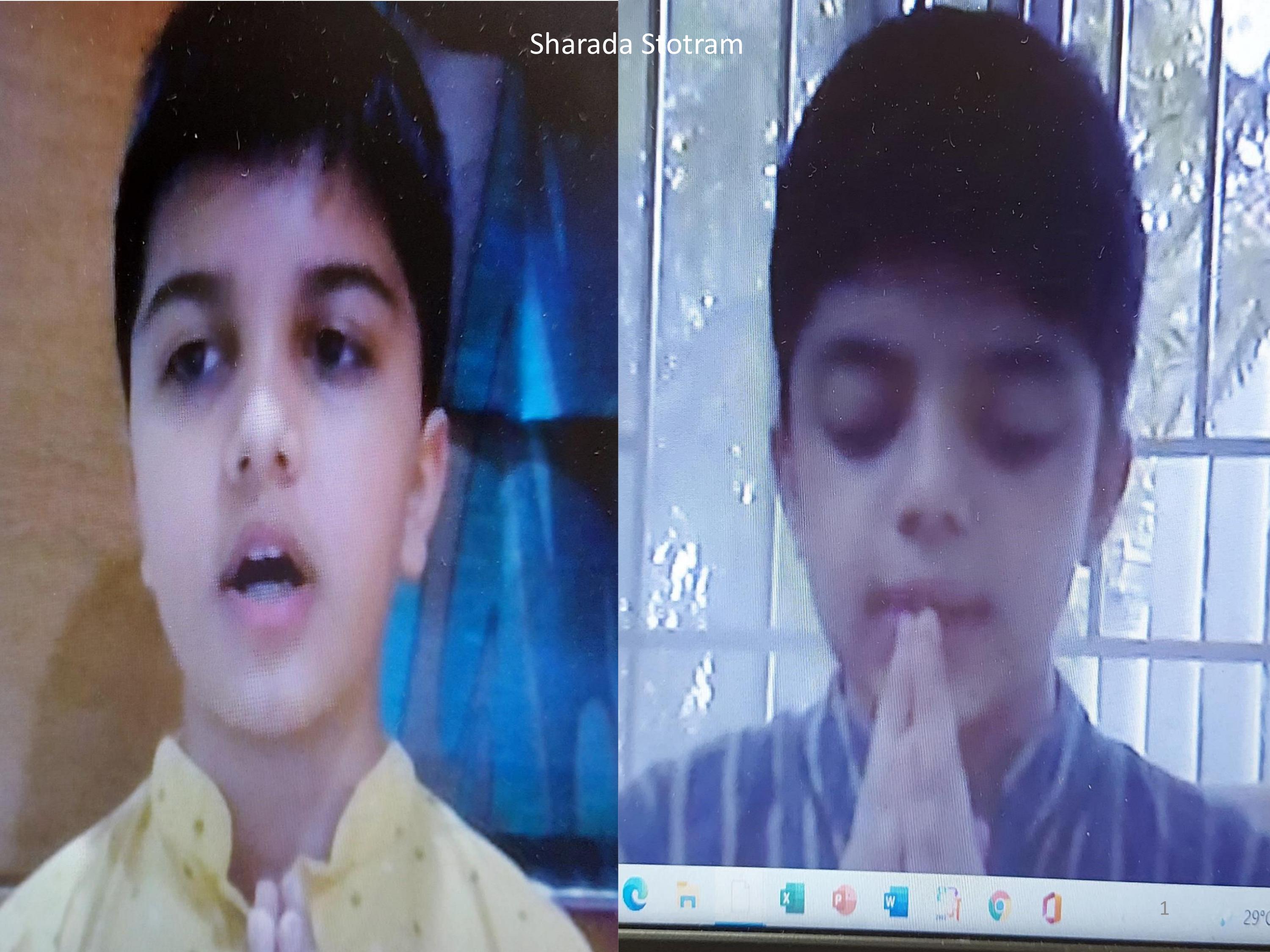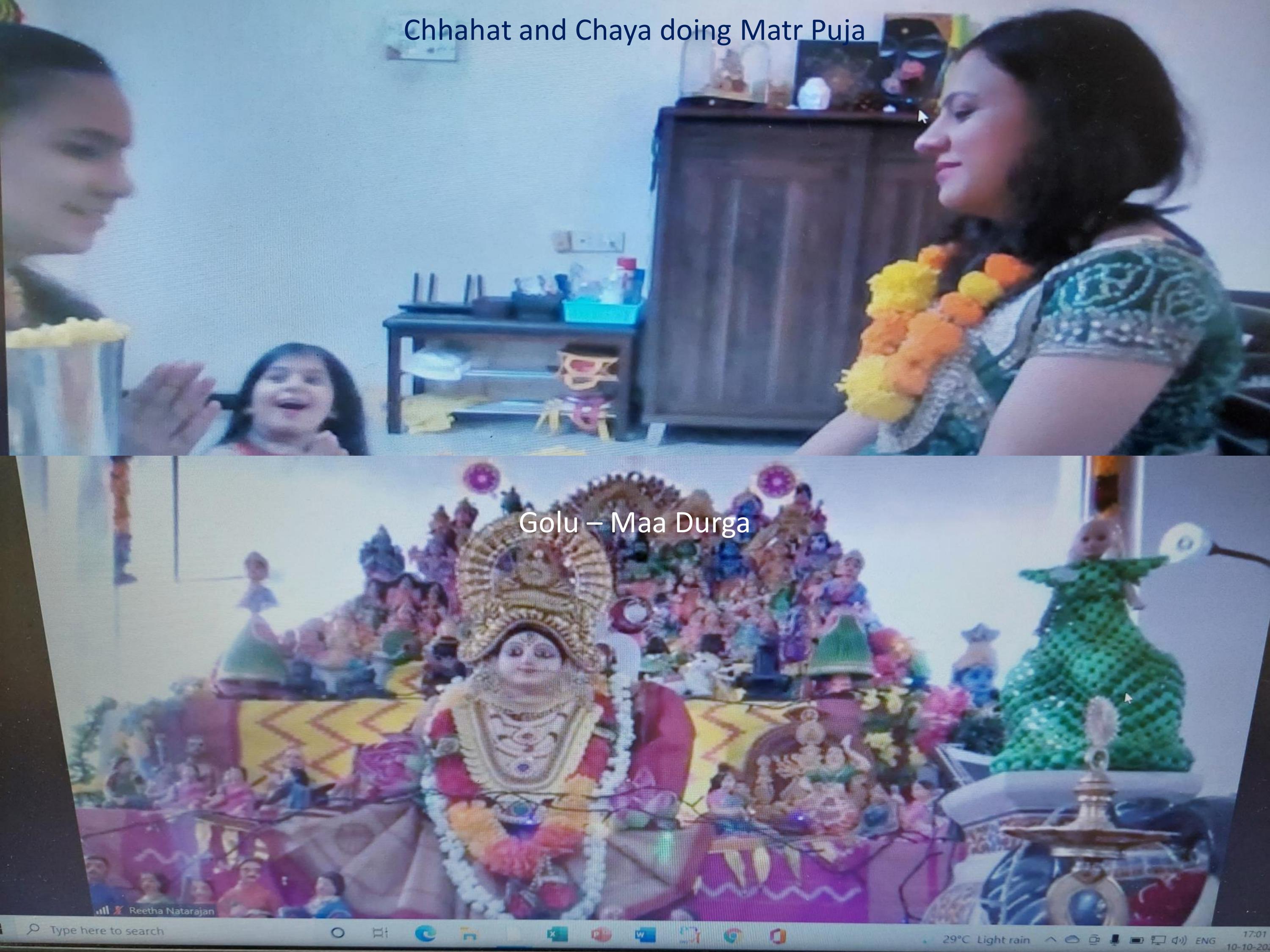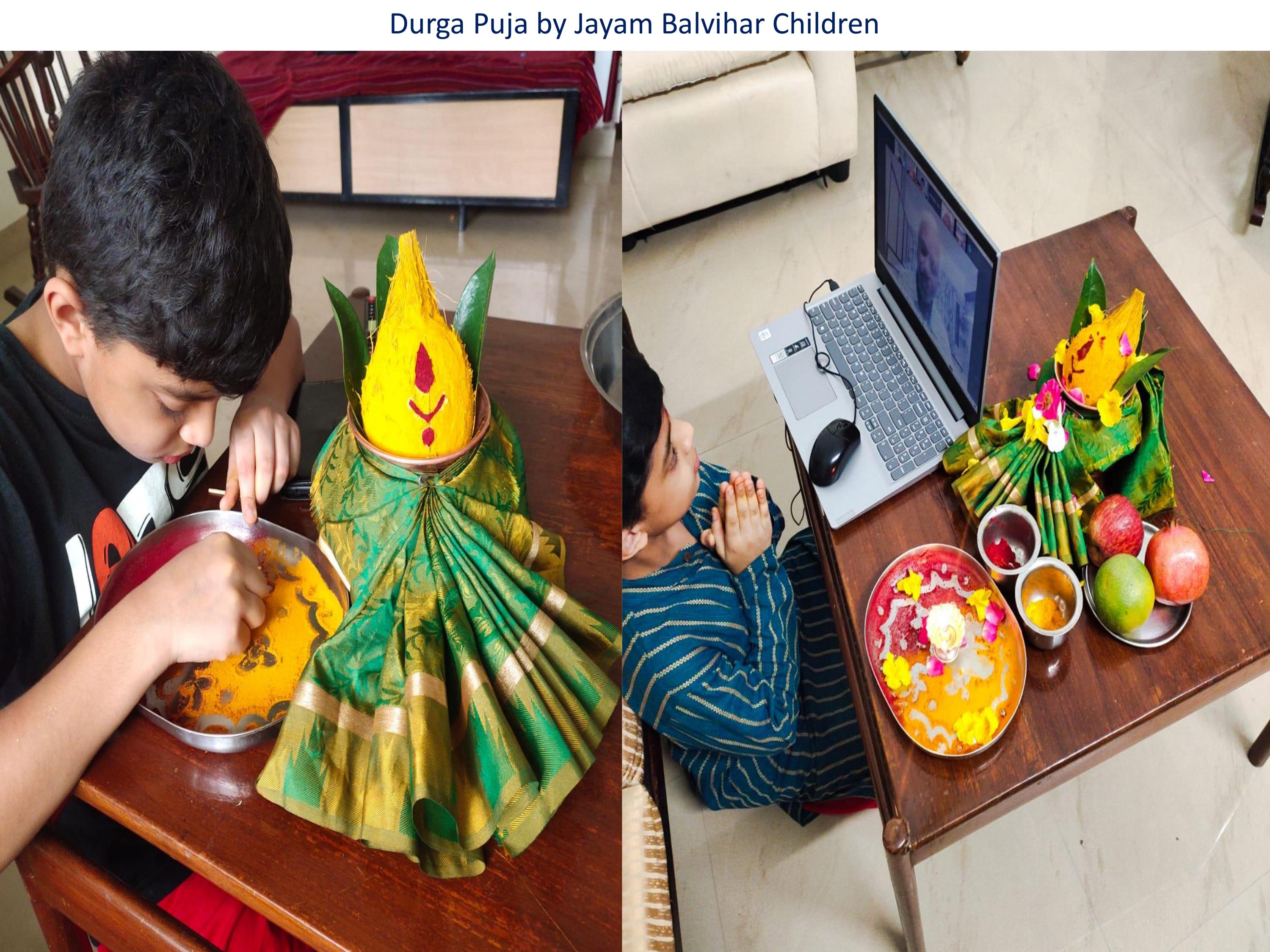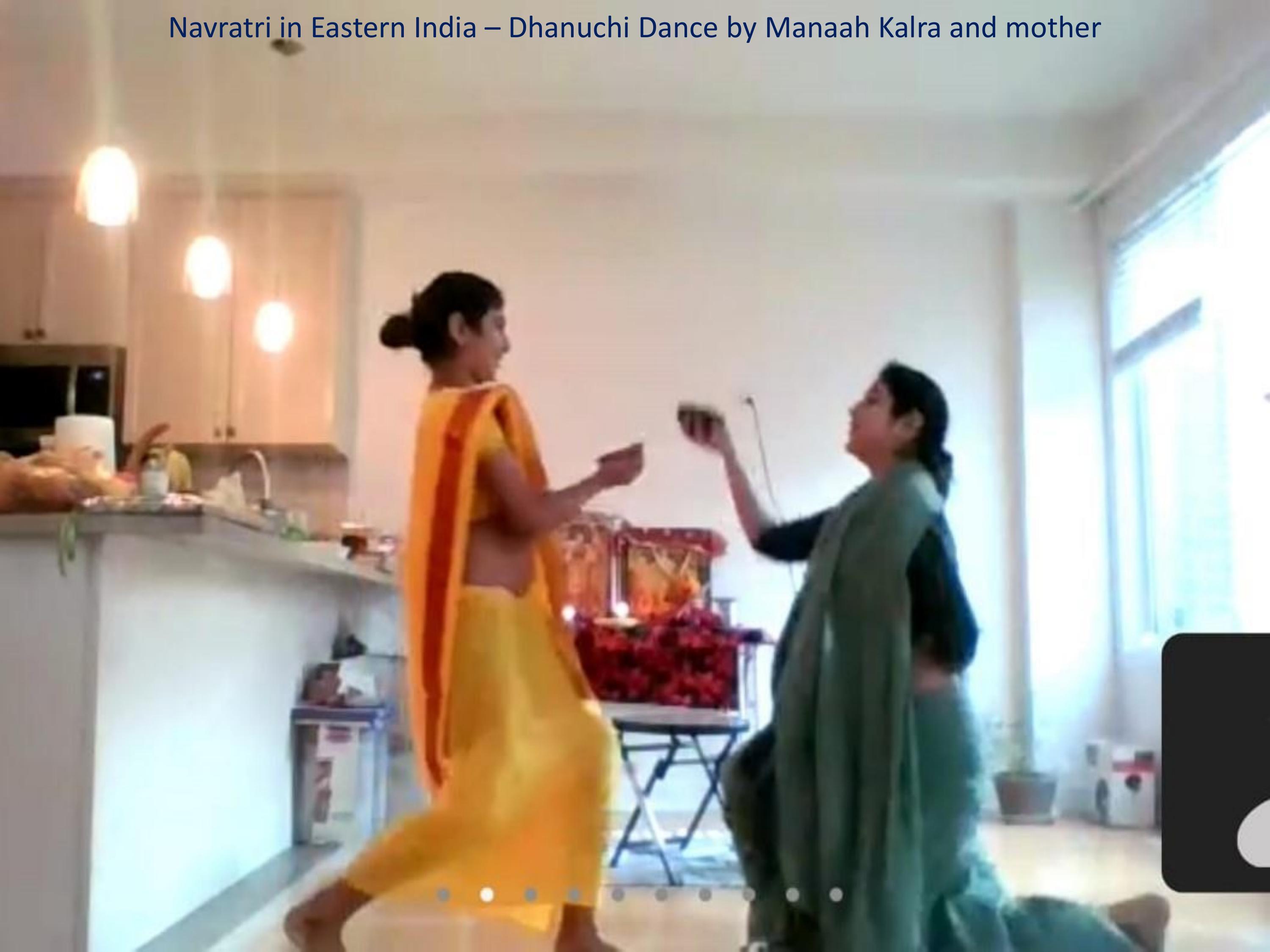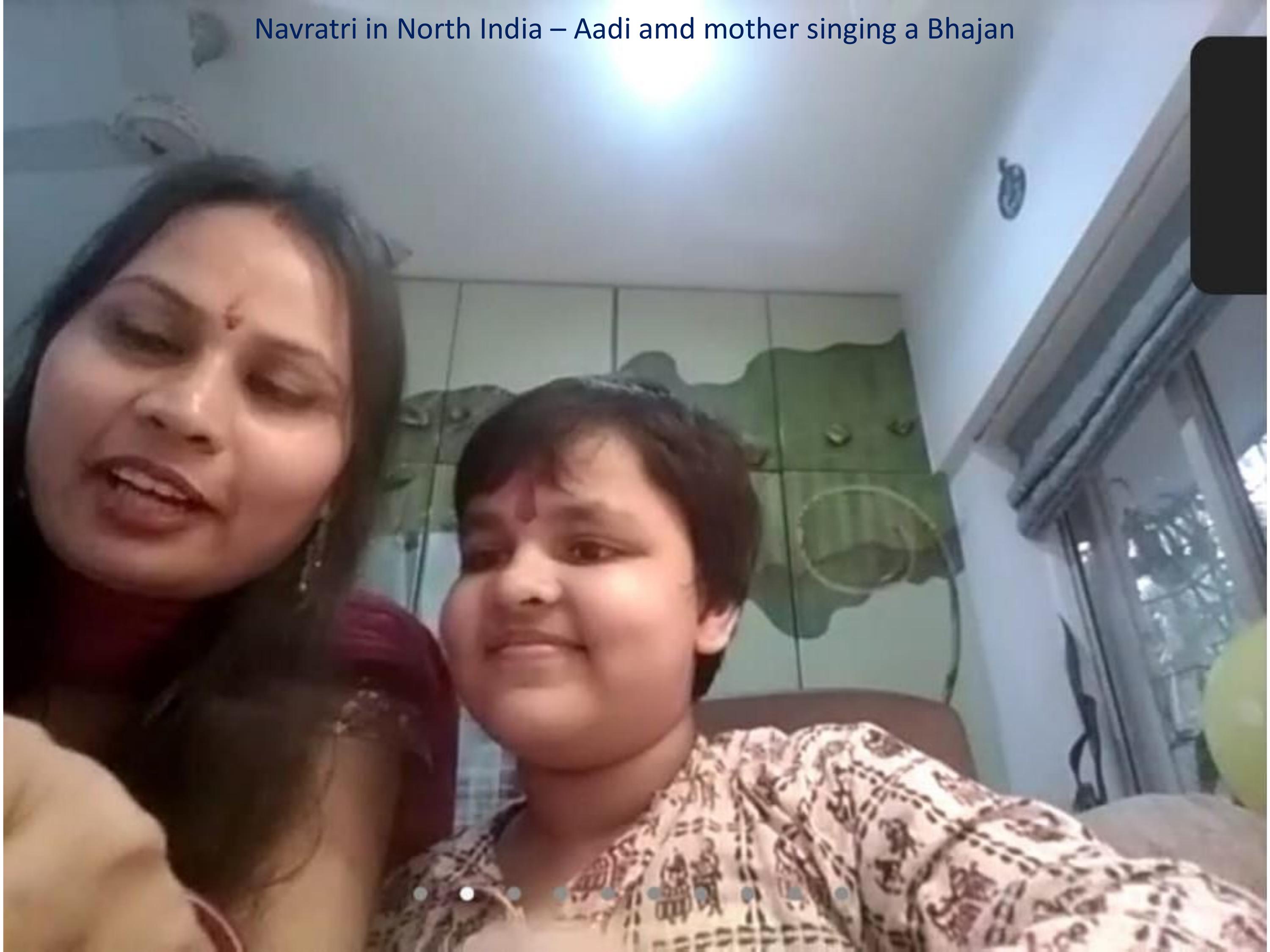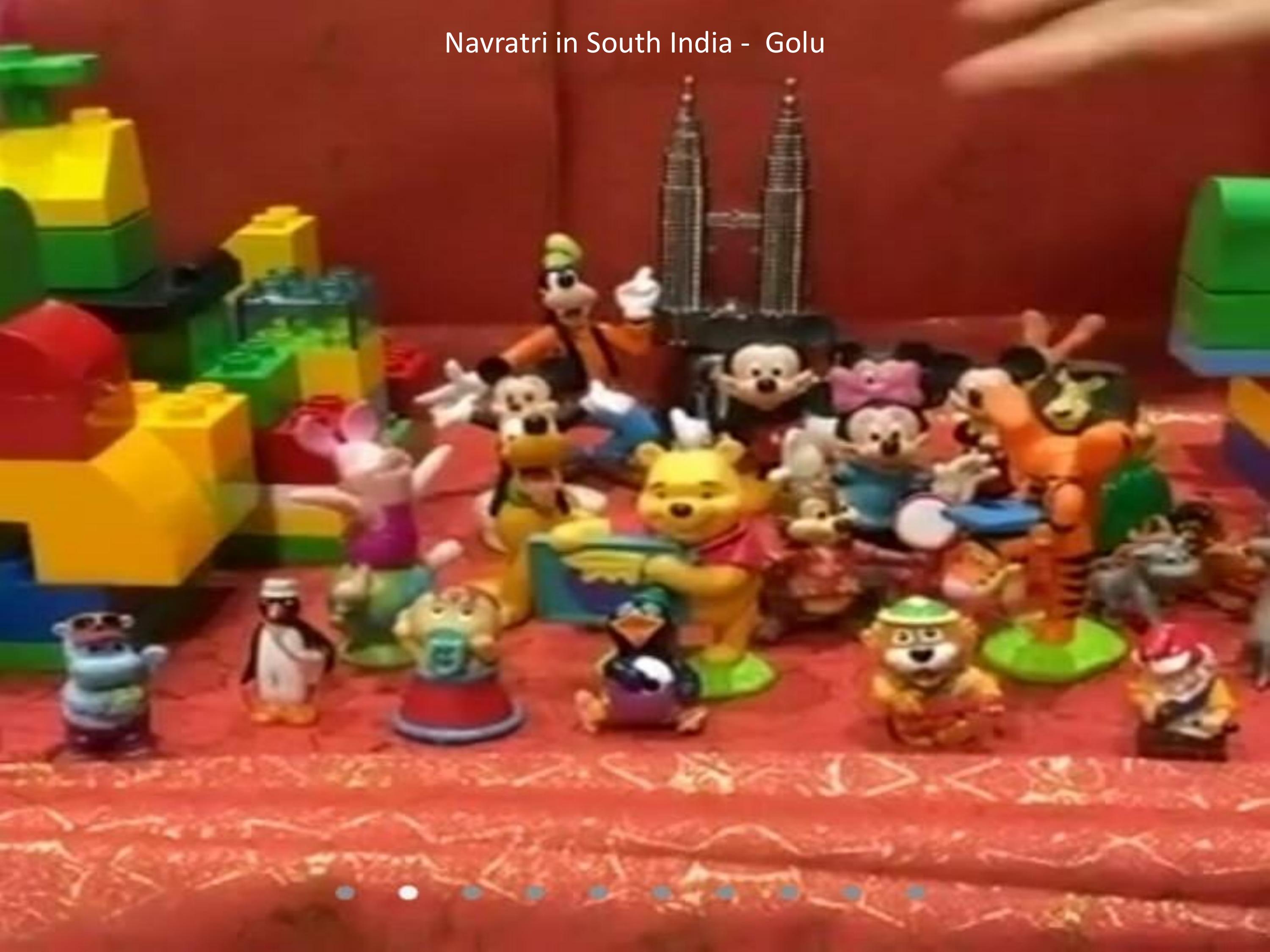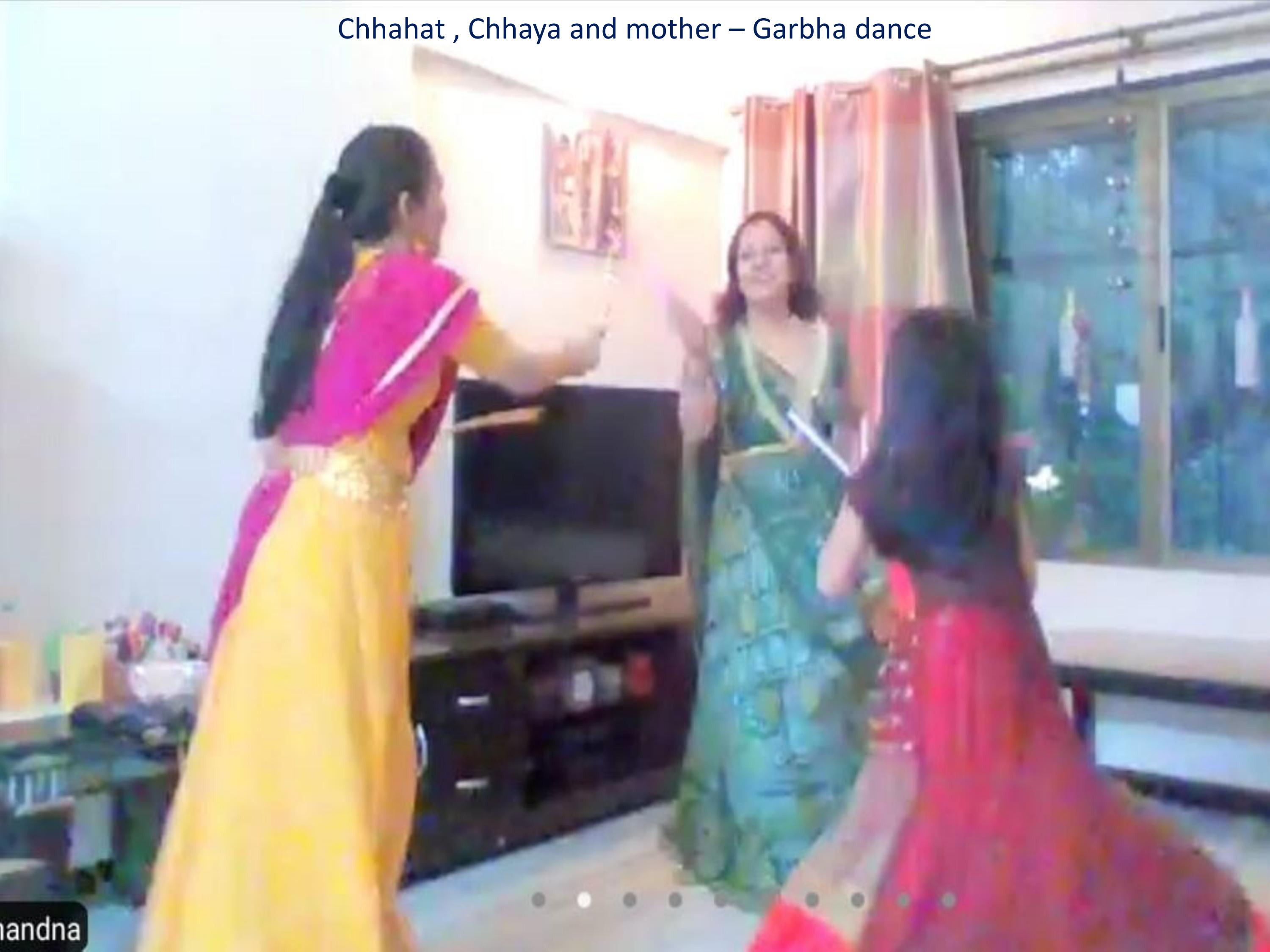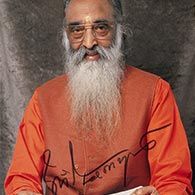Chinmaya Jayam and the children of Jayam Balvihar celebrated Navratri and offered Matrpuja on Sunday, 10th. Of October. The event was attended by 40 participants. Harshiv and Siddheeksha chanted the invocation to begin the ceremony. Manjari Parekh explained the significance of Navratri as an expression of devotion to the feminine principle. Matrpuja is a simple rite to express the gratitude and love that we all feel towards mothers.
The mood was set by the melodious chanting of the Sharada Stotram in praise of Goddess Saraswati by Atul Badri, Govind, Bhavya, Ayushman and Aadi Pandya. For the Durga Puja, the children had created their own altars with either an idol or picture of the Devi or a Kalash. Sheela ably guided the children to perform the worship, by chanting the fifty names of the Devi.
Pratibha Shah next explained the role of the mother and her importance in a child’s life. She guided the children in performing Matr Puja beginning with washing their mothers’ feet. Rupa Kumar chanted Matru Stavanam, the hymn composed by Pujya Guruji Swami Tejomayanandaji in praise of mothers. Chitra Shah translated the Sanskrit shlokas into English. They children garlanded their mothers, offering a flower for each shloka. They performed an arti, touched their mothers’ feet and took her blessings. Each child then embraced the mother and made a secret promise in her ears!
Addvika made a Powerpoint presentation on how Navratri is celebrated in different parts of India. In East India (West Bengal and Odisha), it is celebrated as Durga Puja. She explained the legend of Ma Durga and the rituals associated with the Puja. Manaah and her mother performed the famous Dhunuchi dance, typical of Bengal. In South India it is celebrated in different ways. In Tamil Nadu, the families create a Golu display, with the deities arranged in a careful order. Rishabh and his mother gave a detailed explanation of their Golu. Atul and his mother also had a creatively crafted Golu which they explained. In Karnataka, Dussehra is the famous Jamboo Savari, followed by the illuminated display of the Mysore palace. In Andhra Pradesh, it is Bathukamma Padunga, where Goddess Gauri is worshipped. In Kerala, Vidyarambam is celebrated, with the focus on Goddess Saraswati, the deity of Knowledge & Learning.
Raya and Radhya Valecha then showed us the Ramleela celebrations in North India. A glimpse of Mata ka Jagran was provided by Aadi and his mother, who sang a popular bhajan. In Western India (Gujarat and Maharashtra), Navratri is joyously celebrated in dance: the Garbha and Dandiya dance. Chahat explained the intricacies of the dance forms, followed by her mother, herself and her little sister demonstrating the steps of the dance in the traditional colourful attire. They invited all those present to join in and the foot tapping number was much appreciated and an encore was requested.
The programme concluded with the Aarti sung by Harshiv and Siddheeksha . The children lit a lamp and displayed their beautifully decorated Arti thalis. Shri Manohar thanked the ladies in the Balvihar and Devi group for a brilliantly curated and interesting program, the children and especially their mothers for their creative and enthusiastic participation. After he recited the Shanti Path, the program came to an “official” end but many children, their mothers and the ladies of the Devi group continued to sing the music and dance the Garbha!
Poonam Rao
Tue, Oct 12, 2021
